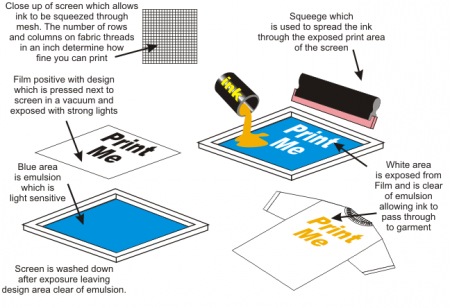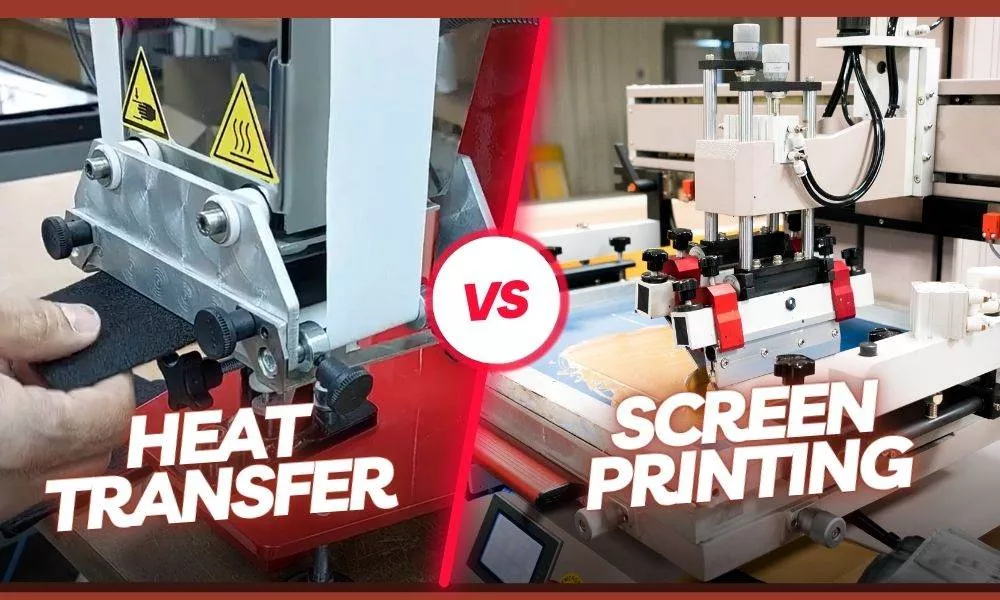Everything about Tx Tees
See This Report on Tx Tees
Table of ContentsThe Buzz on Tx TeesThe smart Trick of Tx Tees That Nobody is Talking AboutThe Definitive Guide for Tx TeesThe smart Trick of Tx Tees That Nobody is DiscussingTx Tees for DummiesThe Only Guide to Tx TeesThe Buzz on Tx Tees
Add up various other expenses, like the number of utilities it takes to run the store and the price of ink and solution per style. Take the print below.The emulsion should just be a few cents given that you 'd only require to layer one screen for this job. So just how much should you bill per t-shirt to make a profit? Normally, printers attempt to make up to 45% earnings on a print task. Below's a table to help you identify that: overall price per thing percent of desired revenue as a decimal (instance:.25 or.45) earnings made per item per task Currently let's discuss the productivity of DTF.

With DTF, you can print a handful of t-shirts, or just one. Make use of the exact same calculator as the section above to calculate just how much revenue you 'd use DTF transfers. Contrast the costs and revenues to whichever method speaks finest to your configuration and procedure. Both display printing and DTF have their particular niches worldwide.
Tx Tees - Questions
The ideal method to recognize? Ask around and see what printing shop like your own are doing. custom t-shirt design. Attempt both out and see which you like better
When you're selecting what sort of printing approach to use for printing your artwork styles on your garments, it is very important that you know the differences in between these 2 strategies so you can make best use of results while reducing expenses. Display printing is one of the most generally made use of technique for printing designs on textiles.
DTG printing is likewise referred to as place or straight to garment printing because it prints only what is needed rather than making a screen as display printers do. https://issuu.com/txtees02. Screen printing functions by screen filler squeegee display printing ink screen mesh display, then moving the image to garment making use of warm and/or pressure
The DTG printer utilizes unique dye-sublimation inks that are applied right into a pre-designed picture by an electronic printing system. The inks enter into the material, enabling lively colors and exceptional information. It's also understood as spot or straight to garment printing because it publishes just what is needed as opposed to making a screen as screen printers do.
Unknown Facts About Tx Tees
It's much faster - you can print a fullcolor photo in minutes, as opposed to hours for display printing. Second, there's no established up time or costs entailed - you can publish any kind of layout you like, without having to create a screen first. Third, there's no waste - because screen printers screen print one design at a time, they have to screen each color separately.
The paper is very expensive and can only be used once. Once it's printed on, it needs to be disposed of. - The preliminary purchase price is lower than the upfront investment of DTG printers- You can publish multi-color layouts one screen at a time rather than needing to publish each shade individually like DTG printing.

Some Known Questions About Tx Tees.
Instead of making use of screen mesh as display printers do, dye sublimation printers make use of laser innovation to move your images onto garments or paper. A warmth process moves the dye from its solid-state straight right into the gas phase which in turn merges it onto fabric substratums when they are rapidly heated up to high temperatures under high stress.
Sublimation printing is environmentally friendly. It makes use of much less water than screenprinting, and because it does not entail the use of unsafe solvents, it's safe for all types of clothing. The color sublimation inks are additionally unsmelling when cured, unlike screen printers that use dangerous chemicals throughout the screen printing process that leave an undesirable smell.
They additionally conserve cash on pricey equipment like exposure units because dye sublimation printers don't require a UV exposure unit or a flash cure oven that is usually utilized in display printing (screen printer). What is direct to garment printing (DTG Printing)? DTG printing is a digital screenprinting procedure that publishes directly onto material making use of specialized inkjet printers
The smart Trick of Tx Tees That Nobody is Discussing
DTG printing supplies lots of benefits over typical screenprinting, consisting of the capability to print photo high quality images, better color vibrancy, and the capability to print designs on darker textiles. DTG printers work by heating up the fabric ink up until it turns right into a gas. The gas after that permeates the fabric, bonding with the fibers to produce an irreversible print.

Display printers merely prepare their screen then begin printing until they run out of item or ink.- There is a wide variety of skilled screen printers throughout the globe, which can be valuable for novices. - It's a slower process - display printers frequently need to wait for the ink to completely dry prior to they can print the next shade- Display printers need manual work, so there's a greater understanding contour and it takes longer to create a top quality design- Display printing isn't as precise as DTG printing, so you might get some "bleeding" of shades from one component of the picture onto another otherwise done correctly.
The Best Strategy To Use For Tx Tees
Nevertheless, instead of using display mesh as display printers do, dye sublimation printers make use of laser innovation to transfer your photos onto garments or paper. A warmth process moves the dye from its solid-state straight into the gas stage which subsequently merges it onto textile substrates when they are quickly heated to high temperature levels under high pressure.
Sublimation printing is eco-friendly. It utilizes much less water than screenprinting, and since it does not include making use of dangerous solvents, it's safe for all sorts of garments. The color sublimation inks are also unsmelling when cured, unlike screen printers that make use of unsafe chemicals during the display printing procedure that leave an undesirable smell.
They also save money on expensive tools like direct exposure units because color sublimation printers do not call for a UV exposure unit or a flash remedy oven that is commonly used in screen printing. What is direct to garment printing (DTG Printing)? DTG printing is an electronic screenprinting procedure that prints directly onto textile using specialized inkjet printers.
Some Known Incorrect Statements About Tx Tees
DTG printing provides many benefits over standard screenprinting, including the capability to print photographic quality images, greater color vibrancy, and the ability to publish layouts on darker textiles. DTG printers function by heating up the fabric ink up until it develops into a gas. The gas after that penetrates the textile, bonding with the fibers to develop an irreversible print.